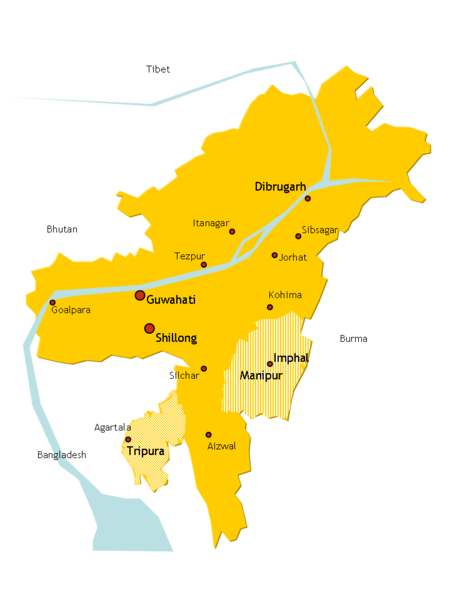Habitat
 Beginning between
the months of May and June, thousands of farmers/field workers
can be observed cultivating their crops in the humid,
sub-tropical, northeastern region of India known as Assam.
Because of the decreasing level of tea production, these
farmers have turned to one of India’s prized possessions, the
Bhut jolokia, in order
to make a living. This very lucrative cash crop craves the prefect climate that
the Indian land of Assam and the surrounding areas such as
Nagaland, India provide.
Here the Bhut
jolokia can thrive due to the hot humid climate and medium
amounts of rain.
Because of the High demand of this chili, the
Bhut jolokia has been
domesticated exactly like
cranberries have, and does not commonly occur in the wild.
In fact, these chilies are being grown all over the world
by anyone who wants to grow it.
Beginning between
the months of May and June, thousands of farmers/field workers
can be observed cultivating their crops in the humid,
sub-tropical, northeastern region of India known as Assam.
Because of the decreasing level of tea production, these
farmers have turned to one of India’s prized possessions, the
Bhut jolokia, in order
to make a living. This very lucrative cash crop craves the prefect climate that
the Indian land of Assam and the surrounding areas such as
Nagaland, India provide.
Here the Bhut
jolokia can thrive due to the hot humid climate and medium
amounts of rain.
Because of the High demand of this chili, the
Bhut jolokia has been
domesticated exactly like
cranberries have, and does not commonly occur in the wild.
In fact, these chilies are being grown all over the world
by anyone who wants to grow it.
